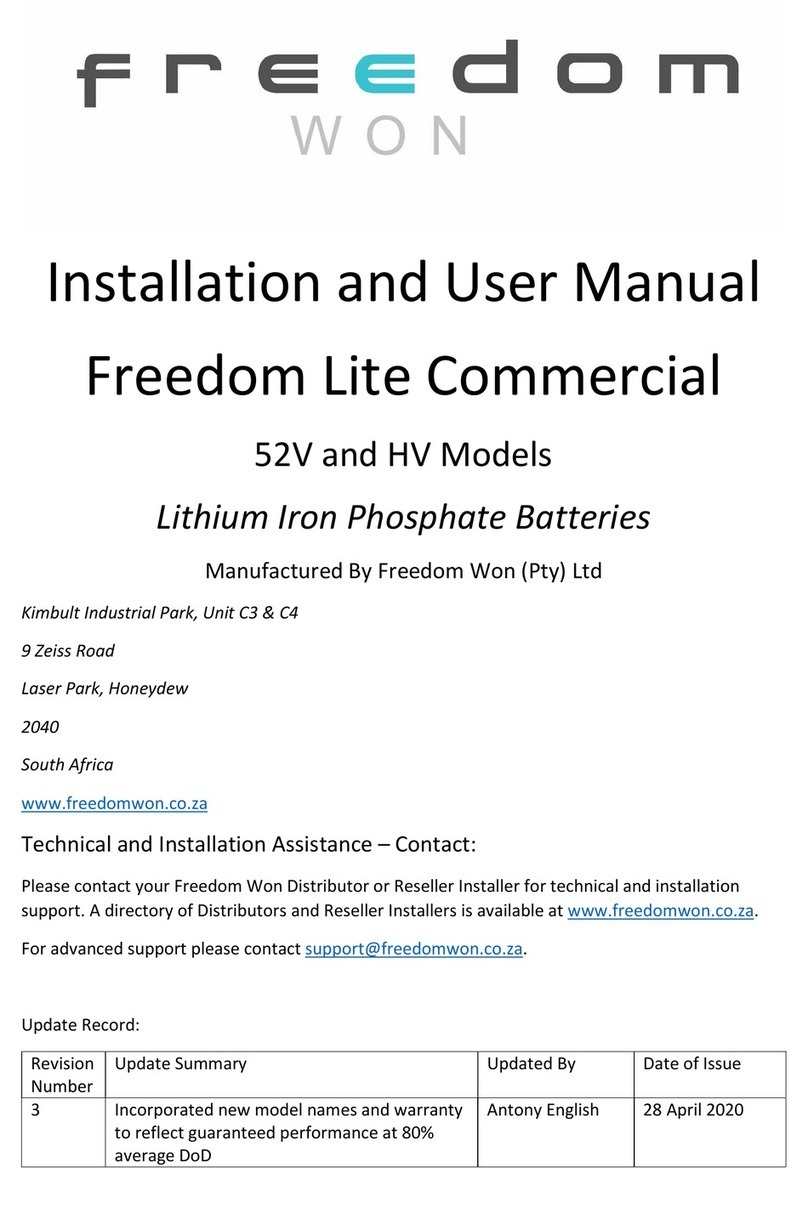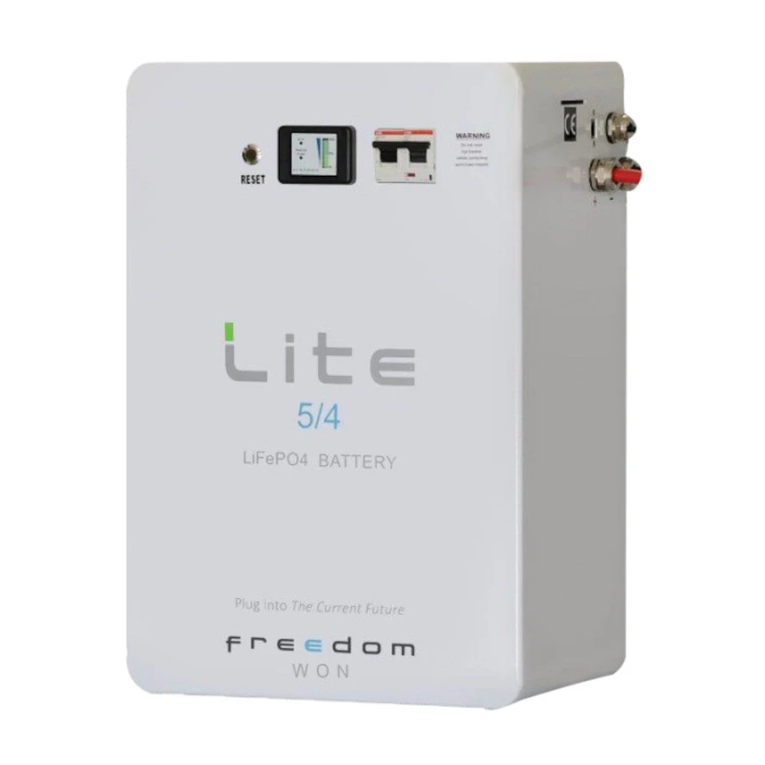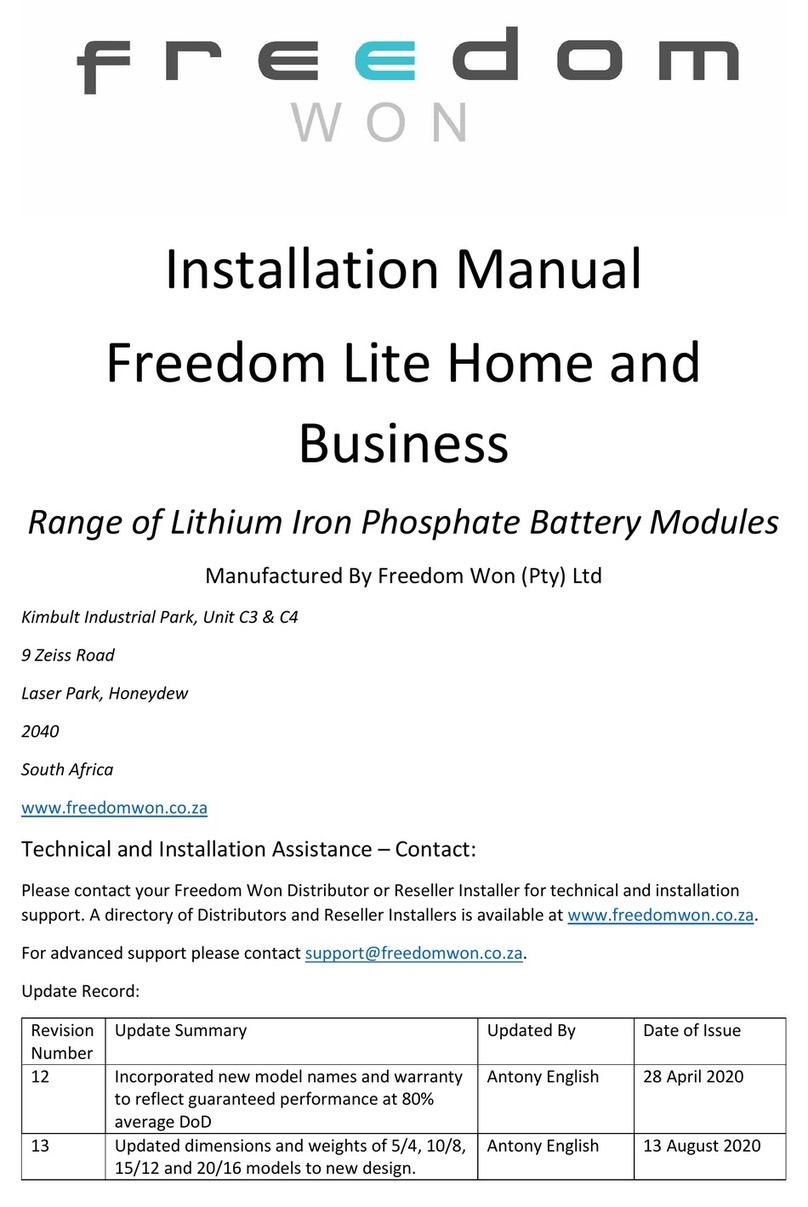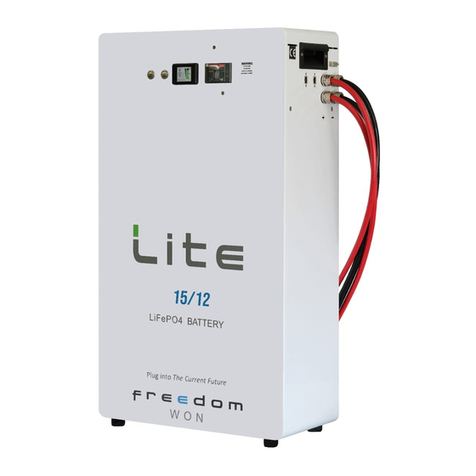
eTower Installation Manual Revision 0
Page 1 | 23
Thank you for choosing eTower for your energy storage needs. Freedom Won is a leading
high-quality brand and we pride ourselves in customer satisfaction and great service. We
hope that you find this manual helpful and complete, but please do reach out to us if you
have any additional requirements or queries.
1. Introduction
This manual is intended to assist an installer with the installation and commissioning of the
eTower lithium iron phosphate (LiFePO4) energy storage modules. This document is not
intended to provide detailed information of the inner workings of eTower that is not
relevant to a person that is performing the installation and final commissioning.
Supplementary information relating to programming of the built-in battery management
system for non-standard inverter interfaces is available to approved integrators directly
from Freedom Won.
This manual does not attempt to cover all the details pertaining to the setup of third-party
equipment in relation to the interface and necessary functionality to work with the eTower.
Freedom Won however is available at the contact details on page one to provide direct
support that specifically relates to the battery interfacing with supported third-party
inverter brands.
2. Product Description
The eTower range presently includes only the e5000 module, which has been designed
specifically for enabling small economical storage solutions that can be upgraded
conveniently and cost effectively over time.
The product includes all accessories required to enable fast and convenient installation.
Although rack mounting is possible, the modules are primarily designed for easy stacking
into a tower through the inclusion of a plastic moulded pedestal that is placed underneath
each module in the tower. Further convenience is offered through the inclusion of the
required communication and power cables along with module connecting busbars.
The eTower is designed primarily for systems that need to start with 5kWh initially with a
view to growing the storage capacity over time in 5kWh increments up to 20kWh.
For designs that require 10kWh or more initially the Freedom LiTE Home and Business range
may be a preferred solution depending on customer preferences and needs.
Freedom Won offers the following ranges in the LiFePO4 technology:
1. Lite 12V
2. eTower
3. Lite Home and Business
4. Lite HV Home and Business
5. Lite Marine
6. Lite Mobility (golf carts, forklifts etc)
7. Lite Commercial (including Lite Commercial 52V, HV, and HV+)

































